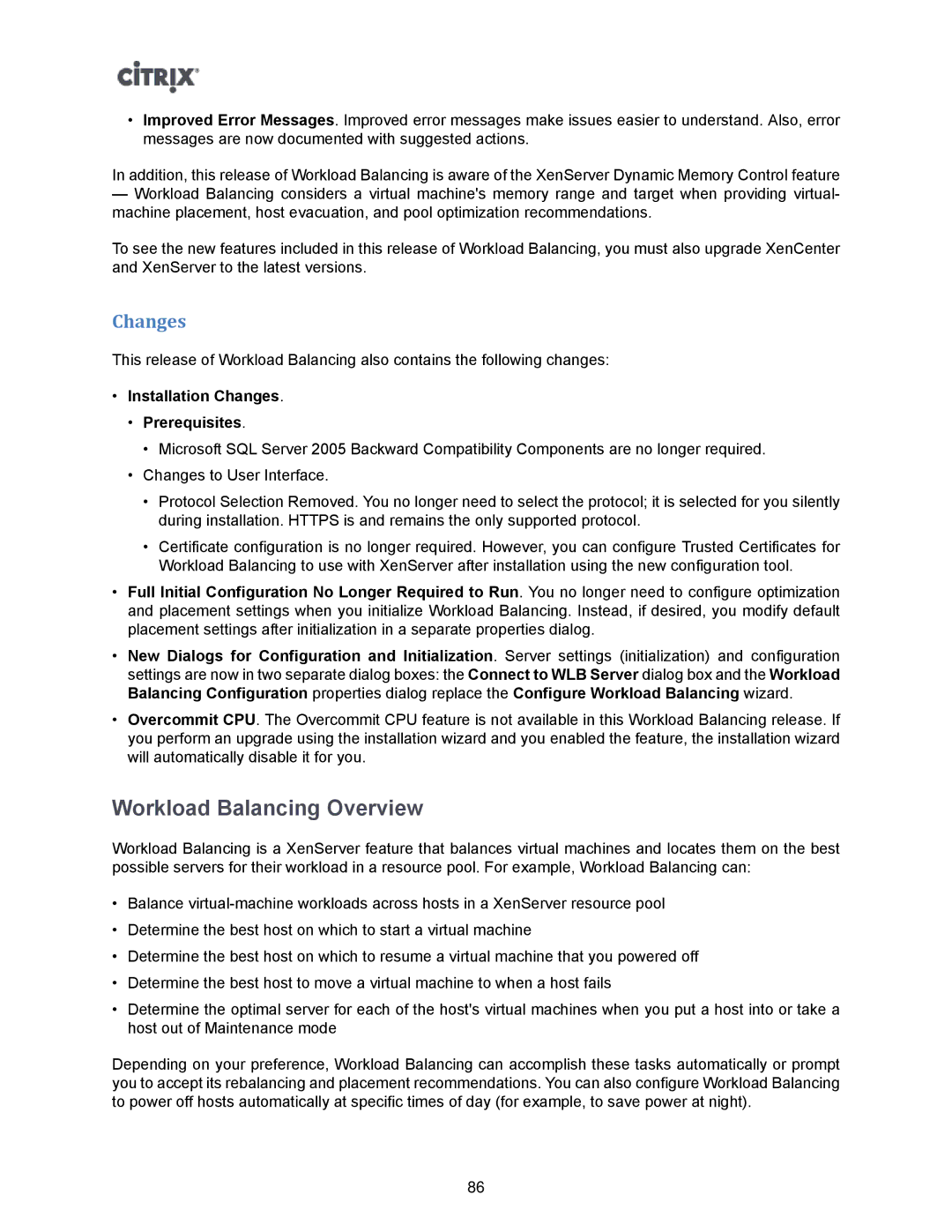•Improved Error Messages. Improved error messages make issues easier to understand. Also, error messages are now documented with suggested actions.
In addition, this release of Workload Balancing is aware of the XenServer Dynamic Memory Control feature
—Workload Balancing considers a virtual machine's memory range and target when providing virtual- machine placement, host evacuation, and pool optimization recommendations.
To see the new features included in this release of Workload Balancing, you must also upgrade XenCenter and XenServer to the latest versions.
Changes
This release of Workload Balancing also contains the following changes:
•Installation Changes.
•Prerequisites.
•Microsoft SQL Server 2005 Backward Compatibility Components are no longer required.
•Changes to User Interface.
•Protocol Selection Removed. You no longer need to select the protocol; it is selected for you silently during installation. HTTPS is and remains the only supported protocol.
•Certificate configuration is no longer required. However, you can configure Trusted Certificates for Workload Balancing to use with XenServer after installation using the new configuration tool.
•Full Initial Configuration No Longer Required to Run. You no longer need to configure optimization and placement settings when you initialize Workload Balancing. Instead, if desired, you modify default placement settings after initialization in a separate properties dialog.
•New Dialogs for Configuration and Initialization. Server settings (initialization) and configuration settings are now in two separate dialog boxes: the Connect to WLB Server dialog box and the Workload Balancing Configuration properties dialog replace the Configure Workload Balancing wizard.
•Overcommit CPU. The Overcommit CPU feature is not available in this Workload Balancing release. If you perform an upgrade using the installation wizard and you enabled the feature, the installation wizard will automatically disable it for you.
Workload Balancing Overview
Workload Balancing is a XenServer feature that balances virtual machines and locates them on the best possible servers for their workload in a resource pool. For example, Workload Balancing can:
•Balance
•Determine the best host on which to start a virtual machine
•Determine the best host on which to resume a virtual machine that you powered off
•Determine the best host to move a virtual machine to when a host fails
•Determine the optimal server for each of the host's virtual machines when you put a host into or take a host out of Maintenance mode
Depending on your preference, Workload Balancing can accomplish these tasks automatically or prompt you to accept its rebalancing and placement recommendations. You can also configure Workload Balancing to power off hosts automatically at specific times of day (for example, to save power at night).
86
